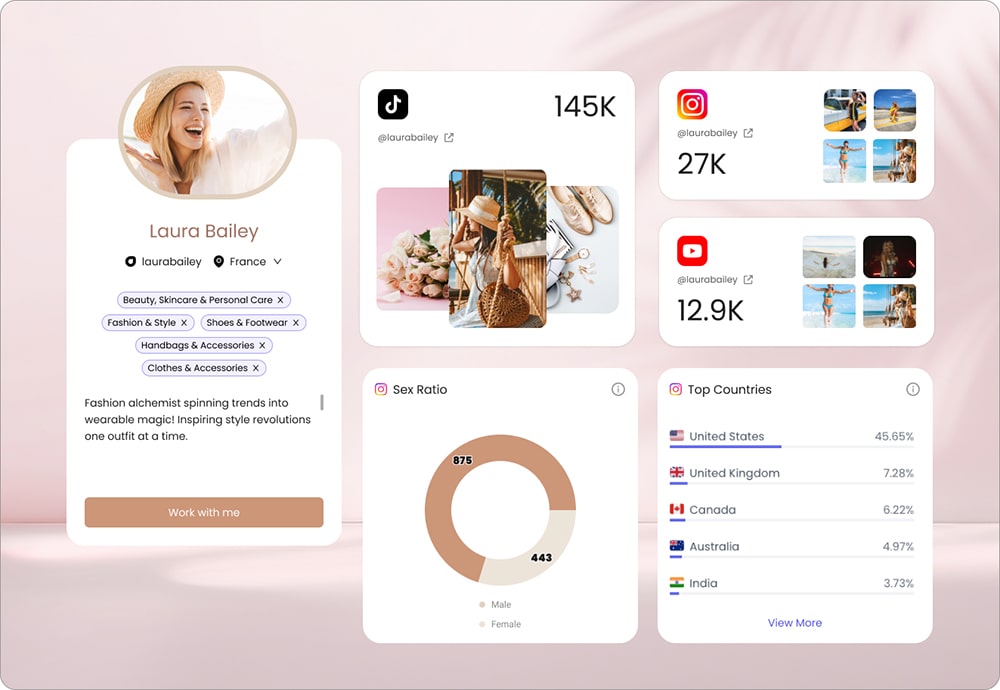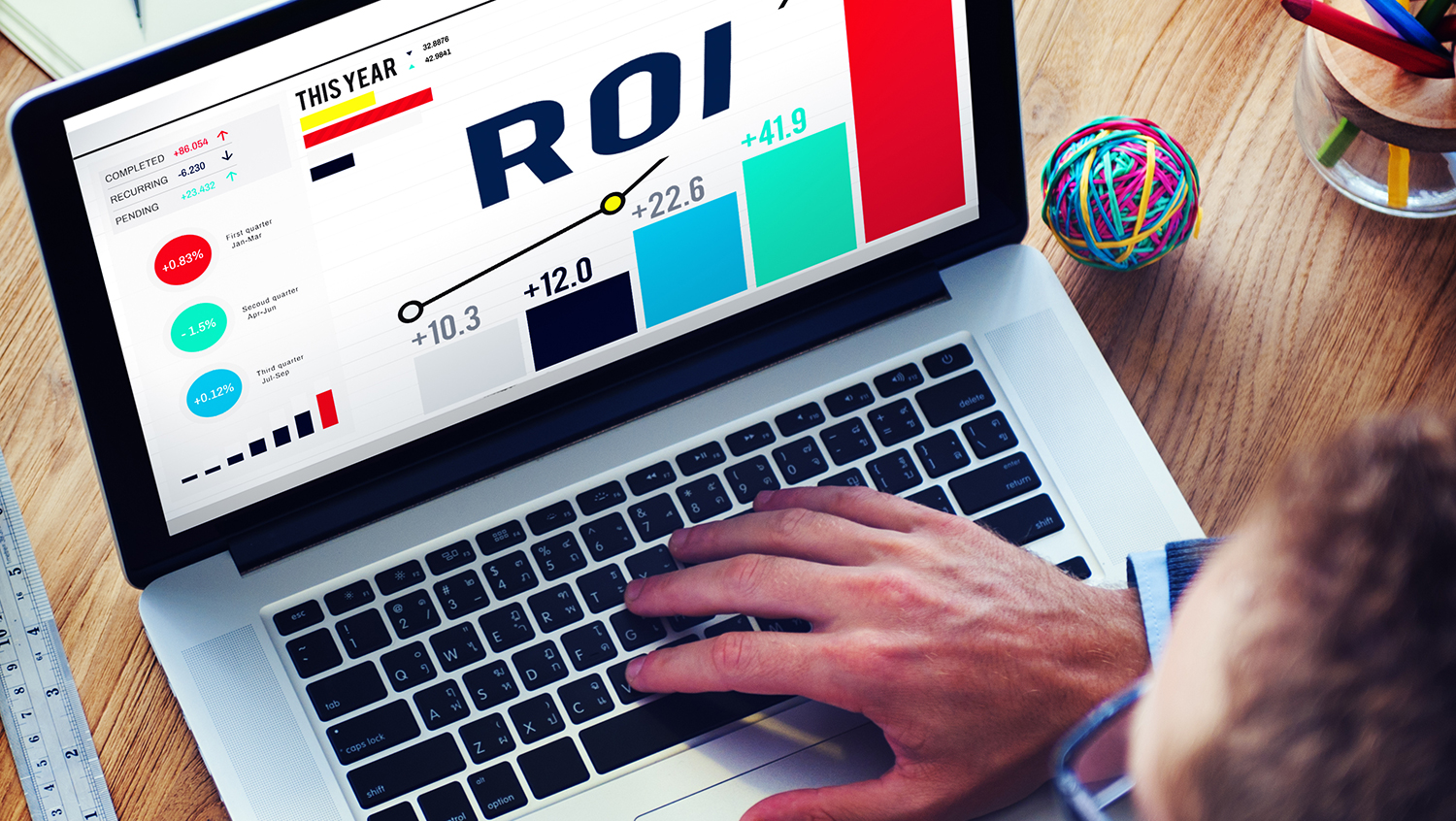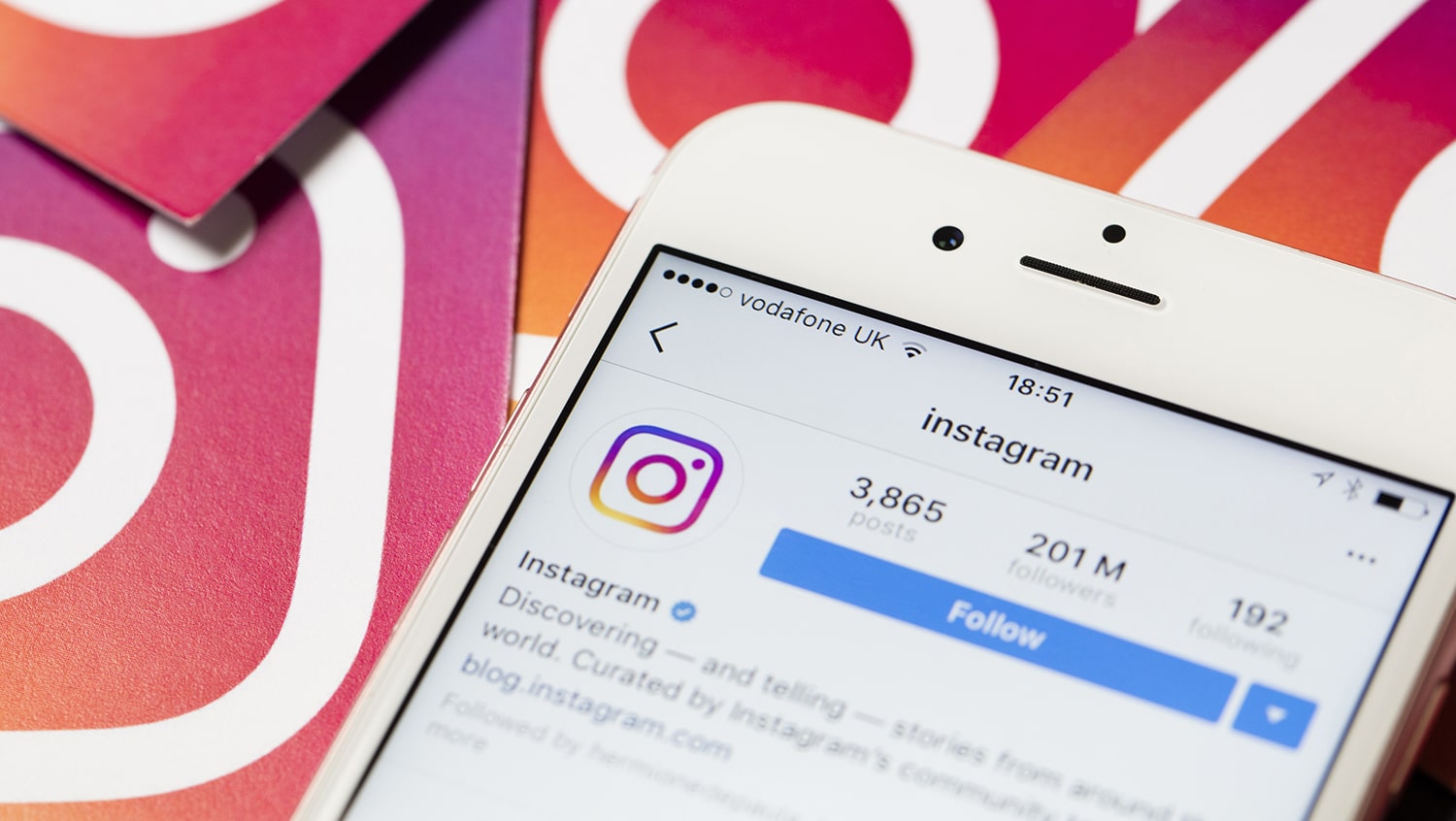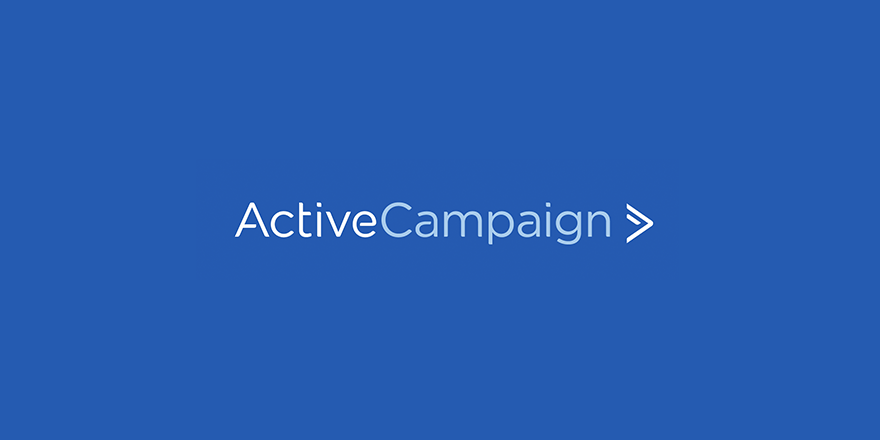Return on Investment (ROI) is a performance measurement that tells you whether the money you spent on something was worth it. Was that advertisement worth the $100 you spent if it only brought you $50 in revenue? Should you spend your next $100 on that, or on an influencer that could bring you $200?
To calculate your ROI, you need to divide your received revenue by the amount you spent to get it.
ROI=received revenue/amount spent
This number will be a ratio. In the case of the advertisement above, the ROI would be 0.5 — for every dollar you spend, you’ll get only 50 cents in return — and for the influencer, it would be 2 — for every dollar you spend, you’ll get 2 dollars in revenue!
It is essential to understand that every channel of marketing strategy plays an important role in the overall effectiveness of your business. And in this article, we’ll break down how understanding ROI can play a role in improving your influencer marketing.
Why it is important to consider ROI as an efficiency measurement tool in Influencer Marketing
Now, almost every brand owner considers influencer marketing as one of the essential directions of its marketing campaign. But to understand how effective your influencer campaign is, you need to find ways to calculate the Influencer marketing ROI — and this isn’t always as simple as you may think.
Finding key indicators lets you conduct an effective campaign and have a good performance. Measuring Influencer marketing ROI has its difficulties since it is hard sometimes to track the revenue gain from doing influencer marketing. Results are not always clear and measurements differ from other channels of marketing. Also, it should be noted that ROI overall but especially in influencer marketing depends on the goal that the brand or campaign owner has.
One of the biggest advantages of influencer marketing is that it often looks like a personal recommendation. It is assumed that promotion by an influencer is always more trustworthy, so it can lead people to recognize a brand in a positive light. This is the reason why there is this widespread myth that influencers marketing can provide up to 11 ROI. While it is quite possible to achieve, it is not always that easy. As mentioned previously, defining the goal is the starting point in the process of calculating the return on investment of influencer marketing.
How to measure Influencer marketing ROI?
Keeping track of ROI is difficult because one needs to choose what to take into consideration.
If you want to calculate the exact number of your return, you need to take into consideration more tangible measures of ROI: what is the value/the amount of money received back. For example, you pay X amount of money to an influencer and receive less, equal, or more than that investment, it can be transferred into a number representing your ROI. It is always preferable that the number of ROI is at least equal to one. It means that a brand has at least received as much money as it invested. Nevertheless, here one important factor should be stated that even if you receive a subpar amount, it does not necessarily mean that the campaign was unsuccessful.
That is, except moneywise, an influencer helps you to get exposure and awareness which is much more than just the money received. Benefits from an influencer post come not only in form of money but it comes in a variety of ways that can contribute to the long-term success of a brand.
The important difference between influencer marketing ROI compared to other marketing channels is that you cannot simply rely on pure numbers of ROI and make decisions based on that tangible measure. Reach, impression, traffic, quality content, brand awareness, and indirect conversations are all part of influencer marketing. Thus, to make a decision it is necessary to pay attention to the tangible ROI measurements, but it should not be the only measure.
In a nutshell, if your goal is financial, then the return should be your first measure to make a decision when choosing the influencer to work with. However, if your goal is to raise brand awareness then you need to take various factors into account before making a decision.
Of course, it is better to combine all factors and take all of them into consideration. What are the factors that capture the complex image of Influencer marketing ROI?
The goal should be clear. After having it in mind, it becomes much easier to create sequential actions to reach a goal.
Speaking about influencer marketing, trust is the first word that comes to mind, and working with influencers based on this very trust is an important factor. The problem is that trust isn’t easily quantifiable. But what we hope is that the audience’s trust of the influencer will be transferred into the trust for the product that is being promoted for us.
So, let’s explore the metrics you should take into account when measuring Influencer Marketing ROI.
Tracking Conversion or sales
The conversion is the primary and priority goal for all the brands and campaigners. To measure the ROI, in this case, is easier but not always precise. One can easily measure direct sales using UTM links that should have been provided to an influencer and later tracked via Google Analytics. However, due to customers’ behavior specifications, most people can choose to check the product page first and later convert from the product’s page bio link.
As you can see in this screenshot, we had several posts during the same period, and most of the visitors come to our website from the link that is in the brand’s official Instagram account.
I recommend having one influencer post at a time, to better track the traffic and the revenue that you get from an influencer, thus making ROI calculation more accurate.
Another way to calculate how effective your investment in the collaboration with influencers was is to pay attention to extraordinary changes in the rise of direct sales during the same and the next 1-2 days. Consider the case when you have your everyday activities for a week and have approximately the same amount of conversions and traffic.
After an influencer has posted about your product, you have noticed that the sales and the traffic have increased twice. The positive change in the results can be counted as revenue your collaboration has brought.
The same can be applied to the conversions from organic traffic (the ones that come from Google Search).
After seeing a post, a person may not click on the link, but rather do his own research to find out more about the brand or the product independently by searching Google. In this case, it will be shown as organic traffic in Google Analytics.
If during that exact day there haven’t been many activities from other marketing directions and only extraordinary activity has been the post by an influencer, the number of conversations from the organic traffic can be considered as a result of an influencer’s post.
An example can be based on an Instagram post from an influencer.
Consider the case where you paid $100 to an influencer and tracked 0 conversions from the link, you got 100 new followers to your product’s Instagram account, and 80$ sales from your brand’s official account bio, moreover, you see a significant rise in Organic traffic and conversions, which is $200 more than usual. Taking into account that the post was the only extraordinary activity that has been done recently, you can assume that the $280 is the revenue you have generated from the collaboration.
To sum up, you have paid $100 and got $280 back, your ROI is $280/$100=2.8.
I understand that most of the time, there may be lots of other stuff going on besides Influencer Marketing that can lead to traffic and conversions and that makes it even more difficult to figure out the results.
In the following example, I am going to show you how to track the results based on the influencer’s location.
We agreed to have a youtube review with an influencer from Poland. After the review, we didn’t see much sales or traffic from the link that the influencer had used, however, we noticed something interesting in Google Analytics, a significant rise in traffic and sales from Poland. Logically these sales come from our polish influencer.
Considering brand awareness
The aim of influencer marketing sometimes can be as simple as raising awareness of a brand or product that it represents. In this case, working with micro or nano influencers can be a viable option but choosing big ones will make the process faster. So it really depends on the budget you possess. One can do effective influencer marketing by collaborating with only micro and nano influencers. For raising brand awareness, take into account the engagement rate of an influencer, how many people are engaged in their post, not only the number of followers. In this case, measuring ROI should consider taking into account the impressions and reach of the post or story.
To know approximately how many people interacted with the post and what was the reach of the post, you can ask an influencer to send you some insights from their post. This will give you a clearer image of how well an influencer is doing their job. Think of ways to maximize your brand exposure by showing your product to as many social media users as possible.
For that, you need to take into account what are the current trends in social media where you want to have a post.
For example, when it comes to Instagram, it can be noted that recently Instagram Reels has become popular among users. So, instead of discussing an option to have a standard post on an influencer’s Instagram account, you can agree on the Instagram Reels option. It is important to listen to the opinion of an influencer. That raises the possibility to have a higher ROI because the page owner knows better what works well and what does not.
Here is a good example of how organically an influencer can feature a brand, not looking too promotional, but rather make an impression that he recommends the product because he really likes it.
We asked him to speak with his own words and gave him all the freedom to create the caption all on his own. As you can see the tweet performed really well, bringing us an ROI of about 2.
Marketing Tools Reviews
Strategies and Hacks
Strategies and Hacks
Marketing Tools Reviews
Marketing Tools Reviews
Strategies and Hacks
Measuring the traffic
Traffic is another goal that influencer marketing can have. The best way to have good traffic is to cooperate with big influencers that have strong engagement. But you need to make sure that the influencer audience is a very targeted one for your business. It is important to remember that quality traffic is what leads to conversions.
So, one way to measure the return on investment can be the calculation of traffic received from a particular influencer. Nevertheless, that is also a challenge, since you cannot track all traffic coming from that influencer. Providing a trackable link and asking him/her for insights will give you an approximate understanding of how it works.
So why is traffic important? First of all, because it can be later retargeted with the advertising option. That being said you can later show Facebook and google ads with the help of retargeting pixel. Using pixel retargeting guarantees that your ads will get seen by the people who have previously entered your website.
The combination of an influencer post and Facebook ads is one of the best solutions to increase your ROI. That’s because sometimes one interaction with a product is not enough for a person to make a buying decision. In this case, you present the product with the help of an influencer, to make your product look credible and cool. A part of the ones who had visited your website may convert instantly, the others may save the purchase for later. They are the ones who can be later converted after seeing your ad.
Google Analytics can help you to measure and understand the approximate number of people that come to your website after clicking the link you had provided to an influencer.
However, some people may see the post but then choose another way to come to your website, for example they can google your product, and the traffic will be counted as “organic traffic” in Google Analytics. Another group of people may choose to check the link in a product’s official accounts on Social media instead of clicking on the link that an influencer suggests. In this case, you should also consider tracking the traffic that comes from the link in bio. That happens because human beings love to make sure they are buying a good product and that it is really worth paying the price. So make sure to tidy up your Social media pages, not to lose potential customers.
Engagement
Engagement is another difficult-to-quantify measurement of ROI. Engagement can be measured by the posts’ likes and comments in case of Instagram or retweets and replies in case of Twitter. The more people are engaged in the post and discuss your brands the higher the possibility to make people curious about your brand. The result of the engagement can be direct sales, brand awareness or traffic.
In the case of story, engagement can be understood by the story insights that an influencer sends you after the story time expires. There you can see how many people send the story to their friends, how many people visit your instagram account and came to your website with the swipe up link.
As you can see there are lots of different ways to calculate ROI, When measuring Influencer marketing ROI, one can almost always clearly understand whether the collaboration was successful or not, based on the impact it has on the brand. Unlike other channels of promotions, such as Facebook Ads, where everything is quite clear, measuring Influencer marketing ROI needs to be more versatile and take into account other factors besides direct conversions, such as brand awareness, engagement and traffic.
Reviewed By Rem Darbinyan
Revolutionizing industries with AI, Rem Darbinyan is the CEO of ViralMango and an entrepreneur, AI expert, and influencer marketing strategist.










